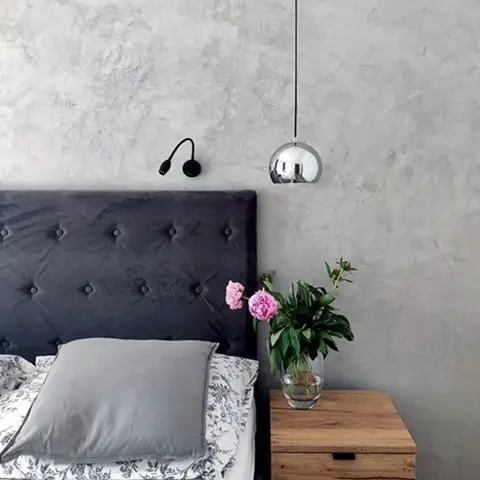How to achieve concrete wall effect, Buildings cladding, Property facade design
How to Achieve Concrete Wall Effect?
9 December 2023
In modern interior design, walls with a concrete aesthetic are gaining increasing popularity. This trend, combining rawness and elegance, is becoming an icon of contemporary minimalism. However, achieving this effect does not always require the use of traditional, heavy concrete. More often, microcement, also known as microconcrete or beton cire, is chosen for its versatility and aesthetics. This innovative material offers ease of application and the ability to adapt to various surfaces, allowing for the creation of the desired concrete look.
What is Microcement?
Microconcrete is an advanced building material consisting of a combination of cement, resins, additives, and pigments. This unique mix gives microcement exceptional flexibility and crack resistance, distinguishing it from traditional concrete. Its pliability allows for application on a variety of surfaces, such as walls, floors, or furniture. Beton cire is characterized by a smooth or textured surface, depending on the application technique, which allows for both a classic concrete appearance and more artistic finishes.
Applications of Microconcrete
Beton cire, with its versatility and aesthetics, has found wide use in interior design. It is an ideal solution not only for creating concrete walls but also for finishing floors, stairs, and even kitchen countertops and sinks. In bathrooms, microconcrete is a practical and stylish option due to its moisture resistance. In kitchens, its ease of cleaning and resistance to stains make it an excellent choice for countertops and walls. Microcement is also popular in living rooms and bedrooms, where its minimalist and modern character allows for the creation of cohesive and elegant spaces.
Advantages of Microcement
Beton cire stands out with several advantages that make it increasingly chosen by interior designers and individual clients. Its main strengths include high durability and resistance to damage, making it an ideal material for intensively used surfaces. Additionally, microcement is waterproof, which is beneficial in moisture-prone areas such as bathrooms and kitchens. The flexibility of microconcrete allows for the creation of seamless surfaces, which not only facilitates cleaning but also provides a modern and aesthetic look. Additionally, the ability to customize the color and texture of microcement to individual needs allows for full creativity and adaptation to any interior style.
Types of Microcement Finishes
Microcement offers a wide range of finishing options, allowing for adaptation to various aesthetic needs and preferences. From smooth and uniform surfaces that mimic traditional concrete to more textured and artistic effects – beton cire provides room for experimentation. It can be finished to a high gloss for a modern elegance effect or applied with a matte finish for a more subtle, natural look. Using different application techniques, such as troweling, unique patterns and textures can be created, bringing life and enrichment to interiors.
Microcement Application – Step by Step
The application of microcement requires precision but is a process that can be mastered even by amateurs. The first step is surface preparation, which should include cleaning and priming walls to ensure better adhesion. Then, the microcement is mixed according to the manufacturer’s instructions, which is crucial for achieving the optimal consistency. The application is done in several layers, using a trowel or spatula, and each layer must be properly dried before applying the next. After applying the final layer, the surface should be sealed with a suitable sealer or wax, ensuring durability and resistance to external factors.
Maintenance and Preservation of Microcement Walls
To keep microcement walls beautiful and functional for many years, proper care is essential. Microcement is relatively easy to maintain – regular cleaning using a soft cloth and mild detergent is sufficient to remove most dirt. Avoid using harsh cleaning agents that can damage the surface. If necessary, the microcement surface can be refreshed with special wax or sealer, further increasing its resistance to stains and scratches.
Summary
In conclusion, the article should emphasize the main advantages of microcement, such as its versatility, durability, and attractive appearance. It is important to encourage readers to experiment with this material, highlighting its possibilities in transforming interiors. The summary can also emphasize that with microcement, the effect of concrete walls is now accessible to everyone, regardless of skill and experience in renovation work.
Find out more about microcement: https://www.festfloor.com/microcement/
Comments on this guide to How to achieve concrete wall effect article are welcome.
Building Tours Selection
British Architectural Walking Tours
Danish Architecture Walking Tours
Dutch Architectural Walking Tours
Comments / photos for the How to achieve concrete wall effect advice page welcome
